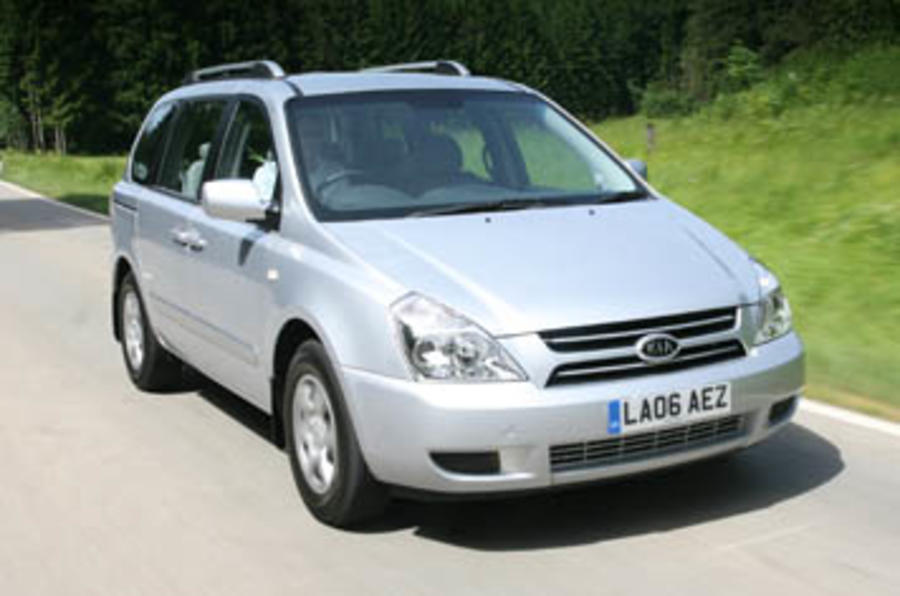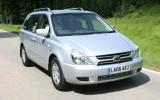What is it?
In an environment where new cars are battling the bulge and losing, it’s strange to find that Kia’s latest Sedona is 200mm shorter than its predecessor. But don’t worry about space; this South Korean shuttle is designed to carry 11 people in its home market.
The European version has a shorter wheelbase than the Korean one, and seven individual seats are installed in a revised 2-3-2 layout. The sliding rear doors are like those on the previous Sedona, and the third tier of seating is still best left to the runts in your family. All seats can now be removed entirely and the former hinterland of rhino-hide plastic has been replaced with a clean and modern environment.
The base-spec GS model will be available with a petrol V6 from December for £15,995, but the revised 2.9-litre diesel in LS auto spec will be the best seller, featuring tri-zone climate control, MP3 stereo, electric doors and reversing sensors. The lengthy spec sheet also extends to safety, with EBD and six airbags.
What’s it like?
The preferred £1100 optional auto doesn’t like to be rushed, regardless of whether it’s in Drive or the rather pointless sequential mode. Starting from rest is particularly lethargic, exaggerated by the diesel’s delayed torque delivery below 2000rpm. However, at cruising speeds the engine pulls cleanly up to the 4100rpm limit, diesel clatter is well insulated and the car rides well. The steering, though low on feel, has an improved directness thanks to a shorter, variable rack.
Insider there is plenty of storage space and those removable chairs increase versatility, but they are both heavy and cumbersome to unload.
Should I buy one?
Overall, this is a positive evolution for the Sedona, building on the previous model. But with similarly priced rivals such as Ford’s dynamically superior S-Max, the big Kia is no longer quite so big on value.











Add your comment